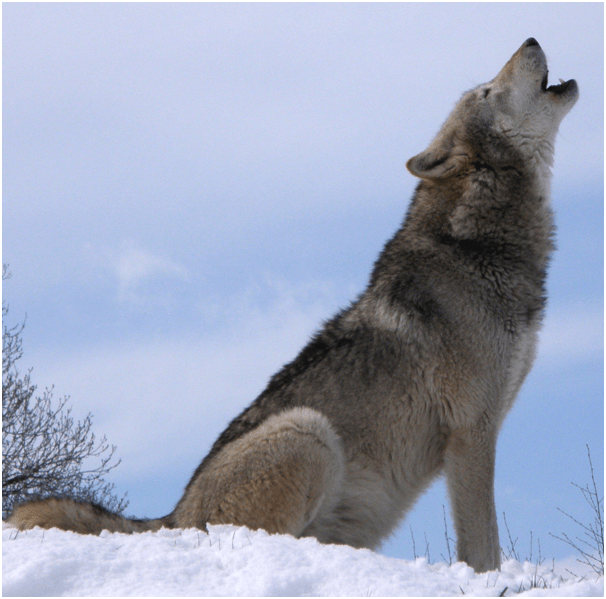Wolves are probably most well known for their famous howl – on a dark night in the forest, this can be a chilling sound! They howl like this to communicate with other pack members when they are alone to let them know where they are. If they are howling in a group, it is more likely a territorial signal to other wolf packs. The ancestors of the domestic dog, wolves do display similar behaviours in the wild, such as howling and barking when they greet each other – just as domestic dogs would do in the park!
Packs of wolves are usually made up of around 6 – 10 wolves but this can vary. They hunt prey much larger than themselves, such as deer by using incredible teamwork skills to bring the animals down. They do eat smaller animals such as rabbit and birds but prefer larger prey with more meat. They can roam up to 12 miles a day on the hunt for their prey and are extremely hard-working and determined when it comes to getting what they want! This teamwork is strictly organised, in order for it to work well it has to be. The pack will be led by one dominant male who will have one female mate – these are the only pair in the pack to produce cubs which are raised by the entire pack.
Wolves used to be a lot more widespread in Europe than they are nowadays. They were hunted out of places like Scotland completely and at this time there no longer any wolves wild in the United Kingdom, although there have been talks about plans to reintroduce them to Scotland. Although they are very unlikely to ever attack humans, humans and wolves have never seen eye to eye due to the wolves’ tendency to attack livestock. Wolves are incredibly resourceful and are able to thrive in many habitats. They are one of the success stories of Chernobyl – the area contaminated with radiation by the nuclear power plant accident in 1986, has been taken over by the wolves who are thriving in what was believed to be an inhospitable wasteland!
One of the most beautiful and inspirational animals, wolves have inspired art from the Native Americans to modern day artists such as bronze animal sculpture maker Gill Parker – http://www.gillparker.com/ – hopefully, wolves will make a return to Britain and Europe in the coming years.
Continue Reading Wonderous Welsh Wagtails







